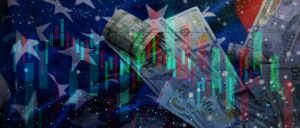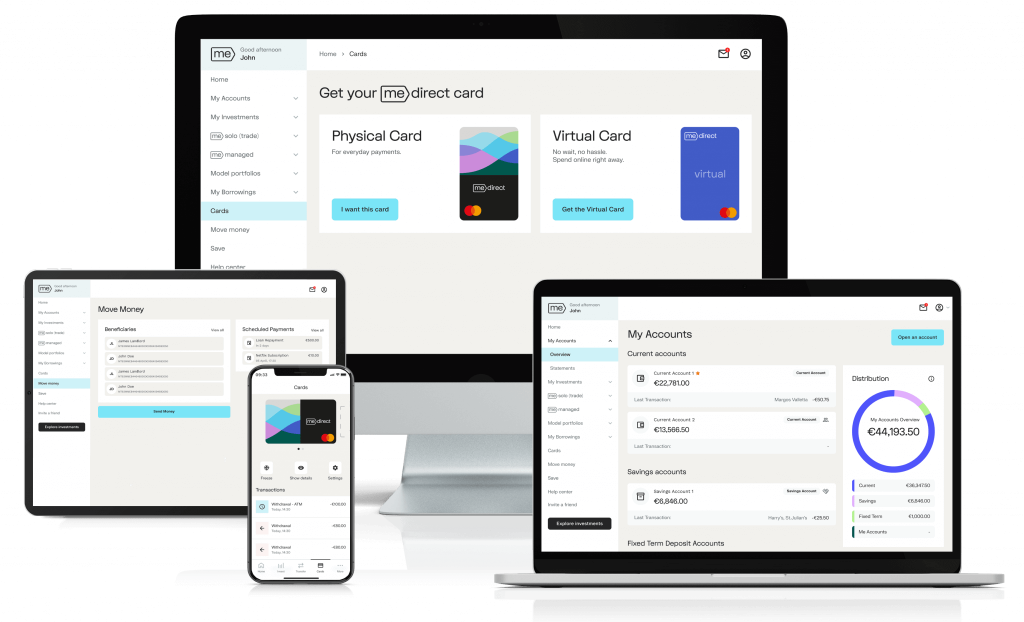By Richard Lawrence, Senior Vice President, Portfolio Management – Brandywine GLOBAL
Risk aversion is helping support U.S. dollar for now, but the longer-term outlook remains clouded by uncertainty.
The indiscriminate selloff that battered financial markets during March left no stone unturned. For globally focused managers such as ourselves that meant currency markets were a source of significant volatility during the month. While the news from China in early 2020 gave us some concern, there was little foreshadowing of the carnage to come as January and early February were relatively benign periods for currency performance, with the dollar index (DXY) appreciating a modest 3.6%. However, from February 20 until March 9, DXY dropped by 5% and the U.S. equity market sold off as investors anticipated preemptive policy easing by the Federal Reserve (Fed) in response to the rising economic risk presented by the coronavirus outbreak.Around March 9, all hell broke loose in the currency complex as global demand for dollars surged. One way this shows up is via the widening of currency basis. Below is a chart of EUR basis showing a drastic drop during mid-March—this indicates investors paying a premium for dollars amidst diminished liquidity. The dollar index surged from 95 to almost 103 by March 20.
Graph: EUR-USD Basis Swap (3M Euribor vs. 3M Libor) 3M

Past performance is no guarantee of future results. Indexes are unmanaged, and not available for direct investment. Index returns do not include fees or sales charges. This information is provided for illustrative purposes only and does not reflect the performance of an actual investment.
The global thirst for dollar liquidity triggered an unprecedented series of responses from the Fed. While the Fed is of course the central bank to the U.S., it serves as the de facto central bank to the world’s financial system given the dollar’s role in global trade and financial activity. Therefore, the Fed needed to move fast to preserve that status. We saw four programs established or enhanced over the course of two weeks:March 15: The cost of weekly dollar swap lines was reduced with foreign central banks that had standing swap line arrangements, such as Canada, England, Switzerland, Europe, and Japan.
March 19: The swap line program was extended to include Mexico, Brazil, Korea, Singapore, Australia, New Zealand, Norway, Sweden, and DenmarkMarch 15: Swap lines with the original five central banks increased in frequency from weekly to daily.
March 31: The Fed announced a new program, the foreign and international monetary authorities (FIMA) facility, allowing foreign central banks with Treasuries on deposit at the Fed to use them as repo collateral to obtain additional dollar liquidity.
As these programs started to take effect, some of the liquidity stress in dollar funding markets started to ease as evidenced by the drop and subsequent stabilization in DXY (see Chart 2 below) as well as the ensuing improvement in cross-currency basis as seen in Chart 1.
Graph: DXY Currency

Past performance is no guarantee of future results. Indexes are unmanaged, and not available for direct investment. Index returns do not include fees or sales charges. This information is provided for illustrative purposes only and does not reflect the performance of an actual investment.
Maybe the most critical variable in our work right now is the dollar. So, where does the dollar go from here? Perhaps we need to frame that answer across multiple time horizons.
The Near-Term
In our view, short-term currency performance tends to be driven by factors such as momentum, risk appetite, sentiment, and liquidity. Given that uncertainty—what we call “information risk”—remains elevated it is likely that risk aversion keeps the dollar in demand. For now, the Fed seems to have done enough to relieve the worst of the dollar squeeze, although probably not enough to push the dollar into a sustained declining trend. Therefore, our near-term view is that the dollar may stay firm but should not appreciate meaningfully from here. Furthermore, as countries around the world start to re-open their economies, we would expect dollar demand to ease somewhat.
The Medium-Term
Over the medium term, currencies tend to be driven by factors such as widening differentials in interest rates, inflation rates, and growth rates. Here the picture is less clear. In 2018, we witnessed a burst of dollar strength as tax cuts in the U.S. fueled stronger growth—which led to the Fed hiking interest rates and resulted in a potent combination of widening interest-rate and growth differentials. Those rate differentials have remained stable or closed somewhat during a sustained global easing cycle, removing a pillar of support for the dollar. As for the path of growth differentials, forecasting directionality right now is challenging as simultaneous growth shocks around the globe start to bite. Who will be the growth leaders over the next year…it’s probably too early to say.
The Longer-Term
Over the longer term, we view measures of value as influential in determining currency performance. So metrics such terms of trade and purchasing power parity (PPP) come into play. These metrics currently suggest that the dollar remains extremely overvalued, and therefore argues for the dollar to decline (Chart 3). With that said, the dollar has remained overvalued on a PPP basis for five years now, coinciding with—and arguably resulting from—the Trump candidacy and presidency. This implies that the 2020 election may play a significant role in determining the path of the dollar after November.
Graph: U.S. Dollar Value

Past performance is no guarantee of future results. Indexes are unmanaged, and not available for direct investment. Index returns do not include fees or sales charges. This information is provided for illustrative purposes only and does not reflect the performance of an actual investment.
Other long-term factors to consider would include productivity differentials, structural reforms, foreign direct investment, and fiscal dynamics. These factors present arguments for both a stronger and weaker dollar. Bulls will point to the possible resumption of tensions between the U.S. and China post-COVID crisis as the catalyst for “de-globalization,” the large-scale onshoring of manufacturing operations back to the U.S. as a way to reduce the reliance on global supply chains, particularly in China. This would likely be hugely dollar bullish, boosting U.S. growth and productivity. On the other hand, the dollar bears will point to challenging fiscal dynamics in the U.S. where the 2019 approximate $1T fiscal deficit is estimated to explode to $3.7T this year (18% of GDP) and remain elevated at $2.1T in 2021 (10% of GDP).
Furthermore, the Fed is currently undergoing an expansion of its balance sheet that has no historic precedent. Chart 5 demonstrates the speed with which a declining balance sheet is now growing at a stunning rate, already at $6.5T, and likely to continue expanding to $9T and possibly beyond—an estimated 40% of GDP. We would expect the Fed balance sheet to pressure the dollar lower.
Graph: U.S. Condition of All Federal Reserve Banks Total Assets

Past performance is no guarantee of future results. This information is provided for illustrative purposes only and does not reflect the performance of an actual investment.
In summary, we believe the COVID-19 induced dollar liquidity crisis is over and we can be confident that the Fed will lean against further dollar demand, but the longer-term outlook remains clouded with uncertainty. Over the next few quarters as economies restart, we will be looking for clues on who are likely to be the winners and losers in what is expected to be an extended and uneven global recovery. Beyond that, in addition to valuation, politics, geopolitics, and fiscal dynamics will possibly come into play for the dollar’s trajectory. Will the dollar be king? Only time will tell.
Legg Mason Key risks and Disclaimers
Forecasts are inherently limited and should not be relied upon as indicators of actual or future performance.
All investments involve risk, including possible loss of principal.
The value of investments and the income from them can go down as well as up and investors may not get back the amounts originally invested, and can be affected by changes in interest rates, in exchange rates, general market conditions, political, social and economic developments and other variable factors. Investment involves risks including but not limited to, possible delays in payments and loss of income or capital. Neither Legg Mason nor any of its affiliates guarantees any rate of return or the return of capital invested.
Equity securities are subject to price fluctuation and possible loss of principal. Fixed-income securities involve interest rate, credit, inflation and reinvestment risks; and possible loss of principal. As interest rates rise, the value of fixed income securities falls. International investments are subject to special risks including currency fluctuations, social, economic and political uncertainties, which could increase volatility. These risks are magnified in emerging markets. Commodities and currencies contain heightened risk that include market, political, regulatory, and natural conditions and may not be suitable for all investors.
Past performance is no guarantee of future results. Please note that an investor cannot invest directly in an index. Unmanaged index returns do not reflect any fees, expenses or sales charges.
The opinions and views expressed herein are not intended to be relied upon as a prediction or forecast of actual future events or performance, guarantee of future results, recommendations or advice. Statements made in this material are not intended as buy or sell recommendations of any securities. Forward-looking statements are subject to uncertainties that could cause actual developments and results to differ materially from the expectations expressed. This information has been prepared from sources believed reliable but the accuracy and completeness of the information cannot be guaranteed. Information and opinions expressed by either Legg Mason or its affiliates are current as at the date indicated, are subject to change without notice, and do not take into account the particular investment objectives, financial situation or needs of individual investors.
The information in this material is confidential and proprietary and may not be used other than by the intended user. Neither Legg Mason or its affiliates or any of their officer or employee of Legg Mason accepts any liability whatsoever for any loss arising from any use of this material or its contents. This material may not be reproduced, distributed or published without prior written permission from Legg Mason. Distribution of this material may be restricted in certain jurisdictions. Any persons coming into possession of this material should seek advice for details of, and observe such restrictions (if any).
MeDirect Disclaimers
This information has been accurately reproduced, as received from Legg Mason Investments (Europe) Limited. No information has been omitted which would render the reproduced information inaccurate or misleading. This information is being distributed by MeDirect Bank (Malta) plc to its customers. The information contained in this document is for general information purposes only and is not intended to provide legal or other professional advice nor does it commit MeDirect Bank (Malta) plc to any obligation whatsoever. The information available in this document is not intended to be a suggestion, recommendation or solicitation to buy, hold or sell, any securities and is not guaranteed as to accuracy or completeness.
The financial instruments discussed in the document may not be suitable for all investors and investors must make their own informed decisions and seek their own advice regarding the appropriateness of investing in financial instruments or implementing strategies discussed herein.
If you invest in this product you may lose some or all of the money you invest. The value of your investment may go down as well as up. A commission or sales fee may be charged at the time of the initial purchase for an investment and may be deducted from the invested amount therefore lowering the size of your investment. Any income you get from this investment may go down as well as up. This product may be affected by changes in currency exchange rate movements thereby affecting your investment return therefrom. The performance figures quoted refer to the past and past performance is not a guarantee of future performance or a reliable guide to future performance. Any decision to invest should always be based upon the details contained in the Prospectus and Key Investor Information Document (KIID), which may be obtained from MeDirect Bank (Malta) plc.





